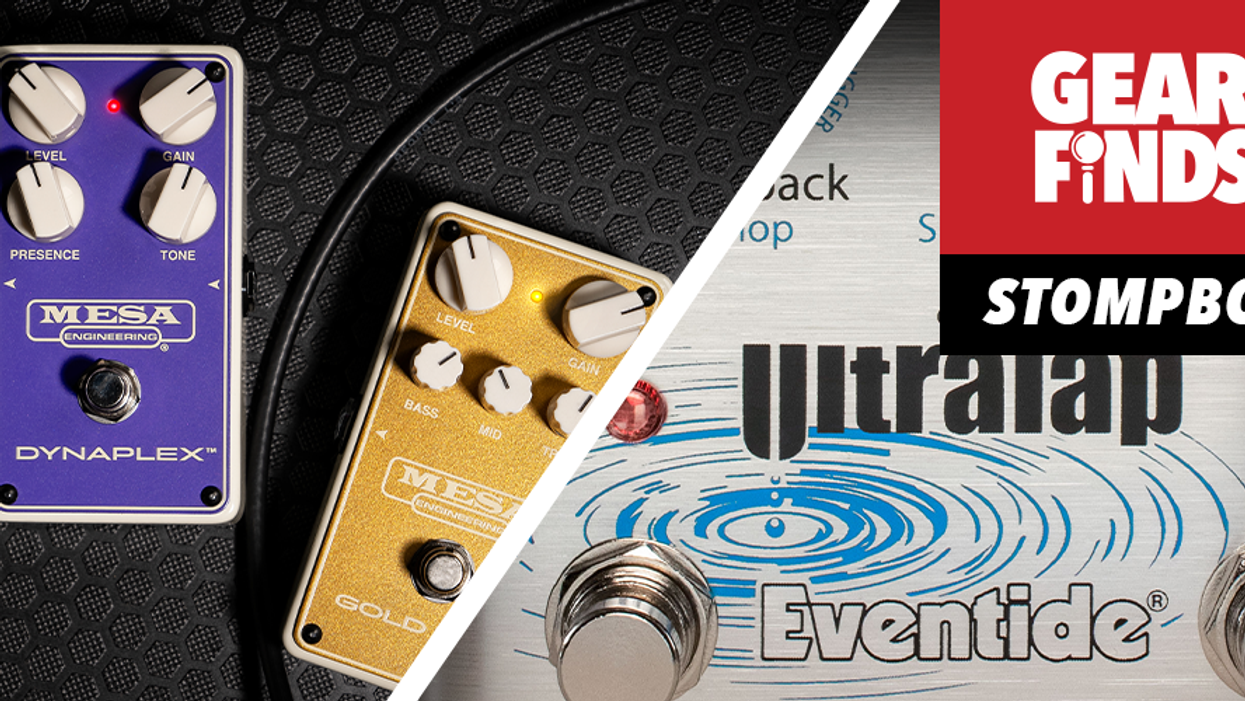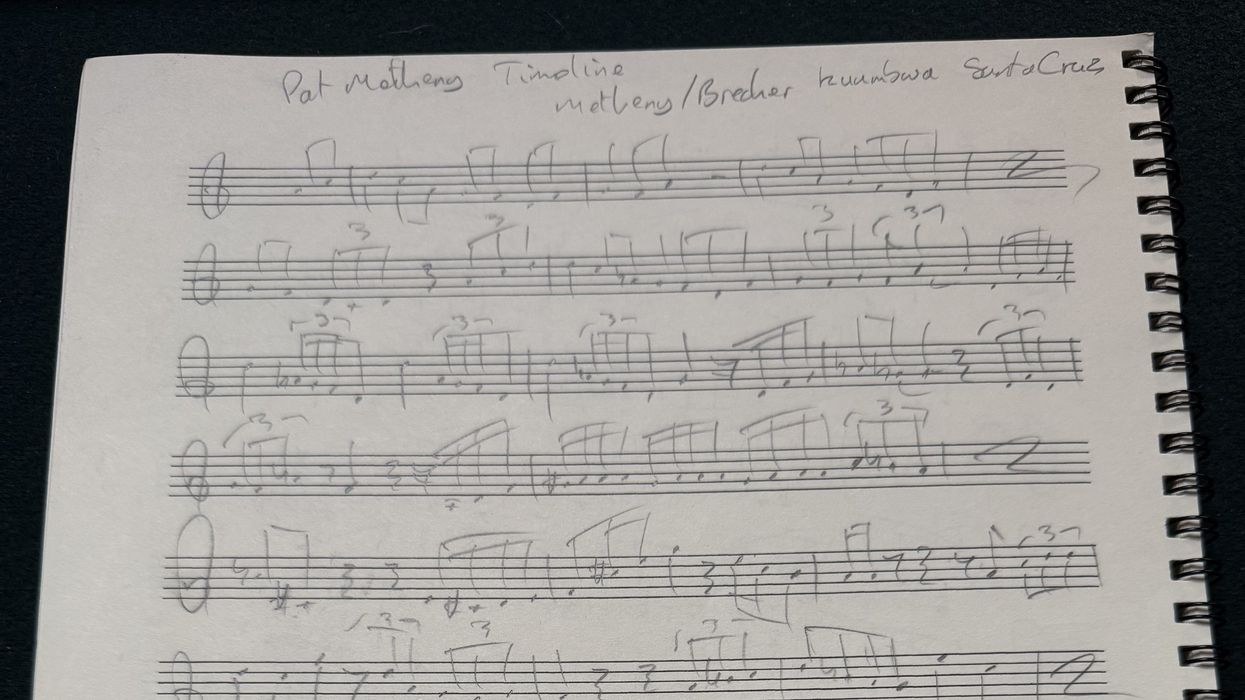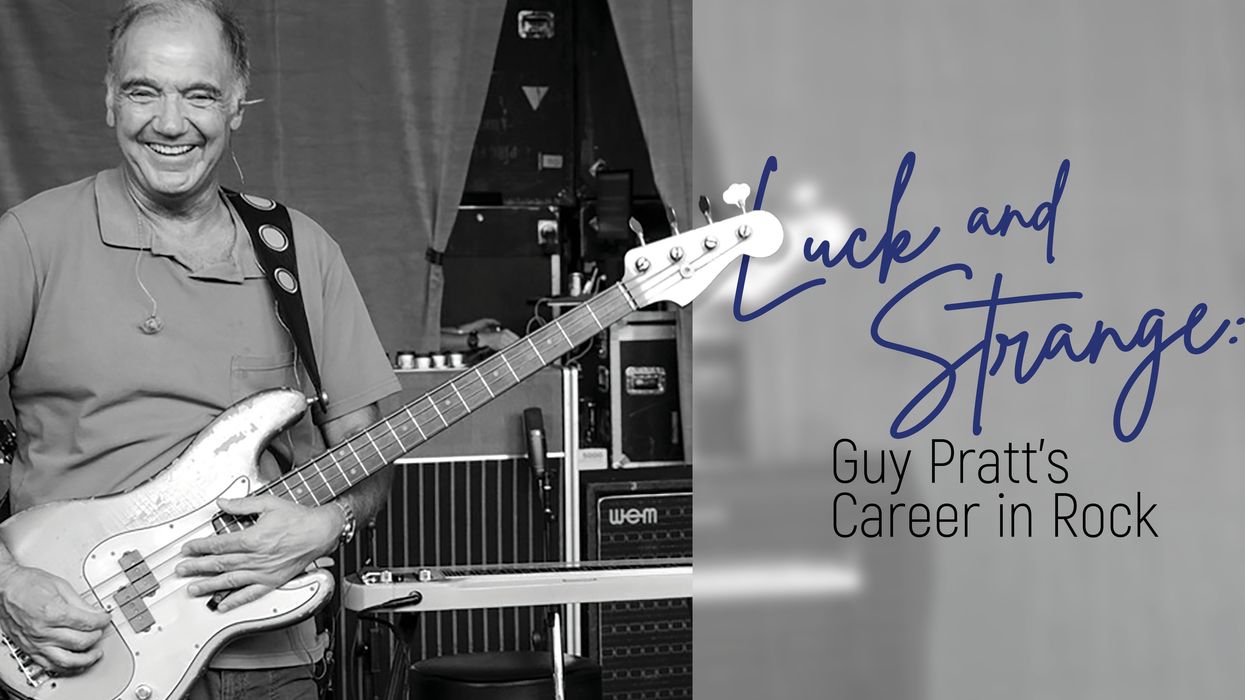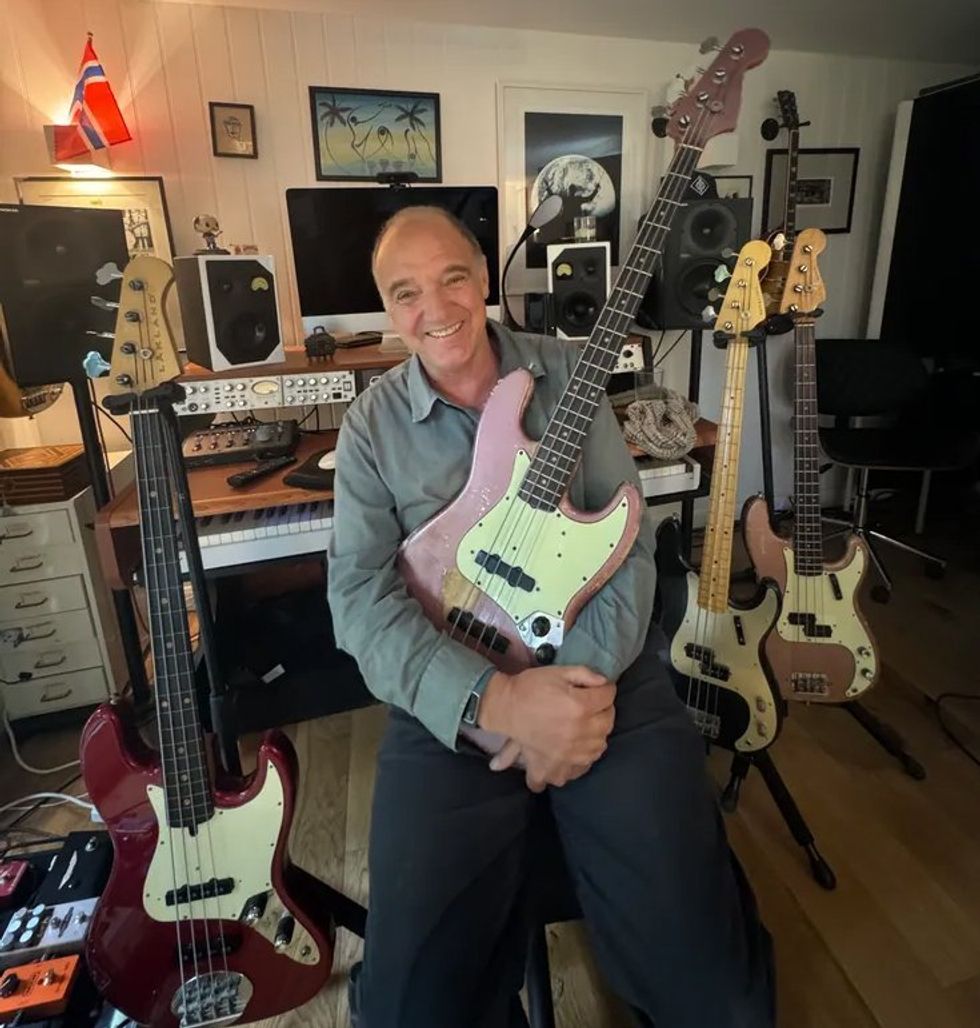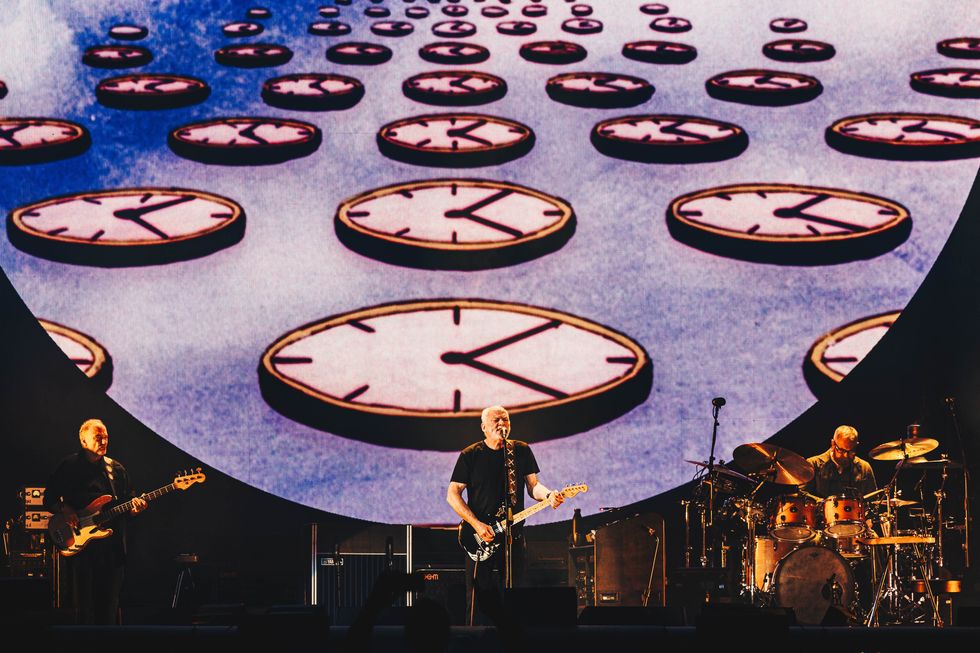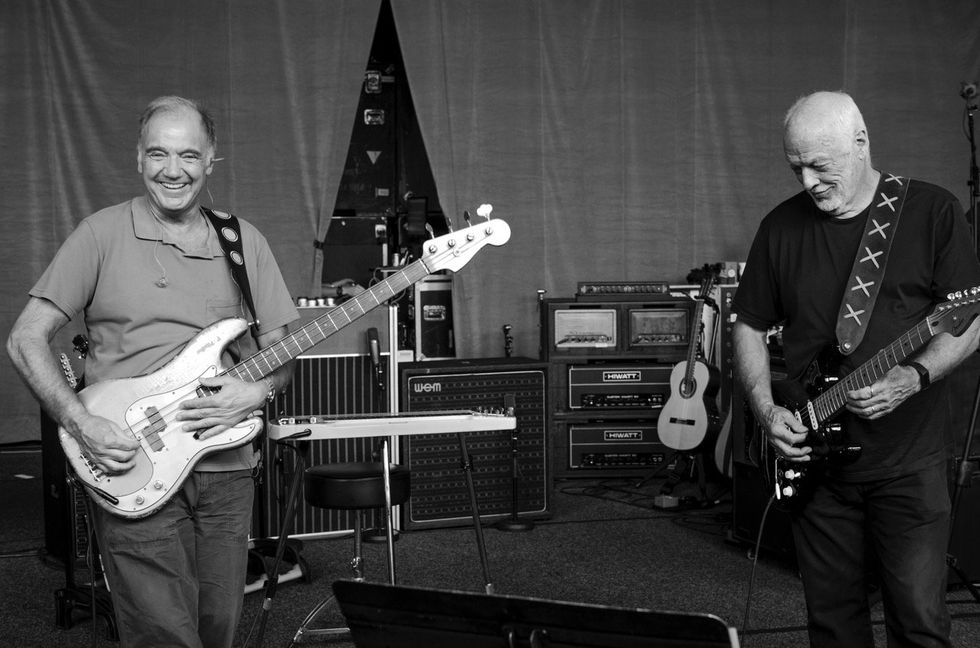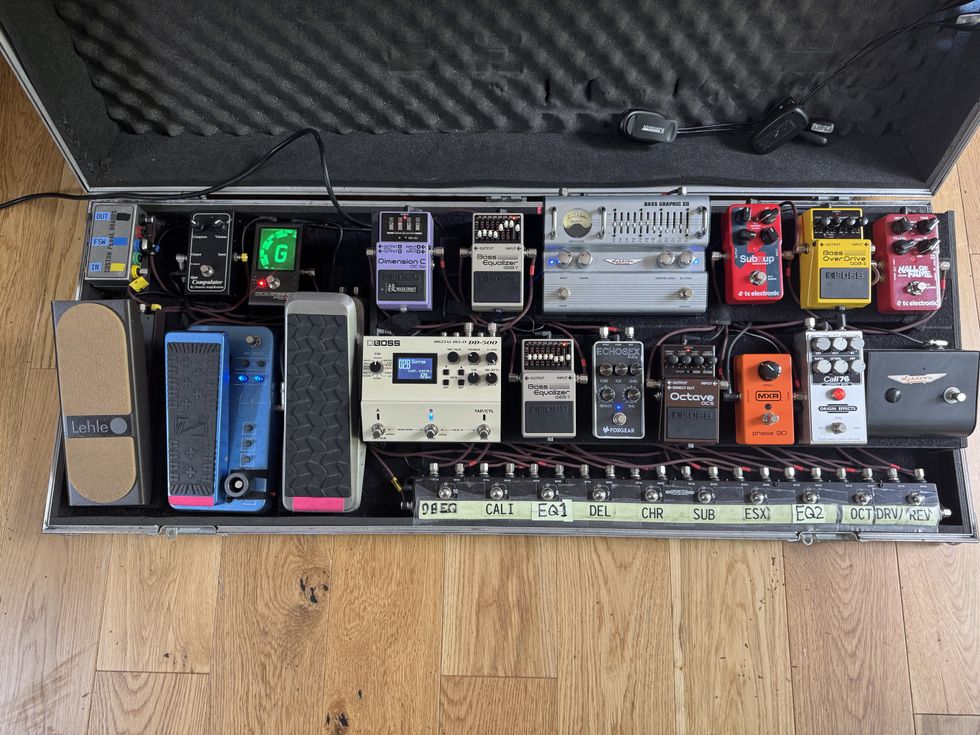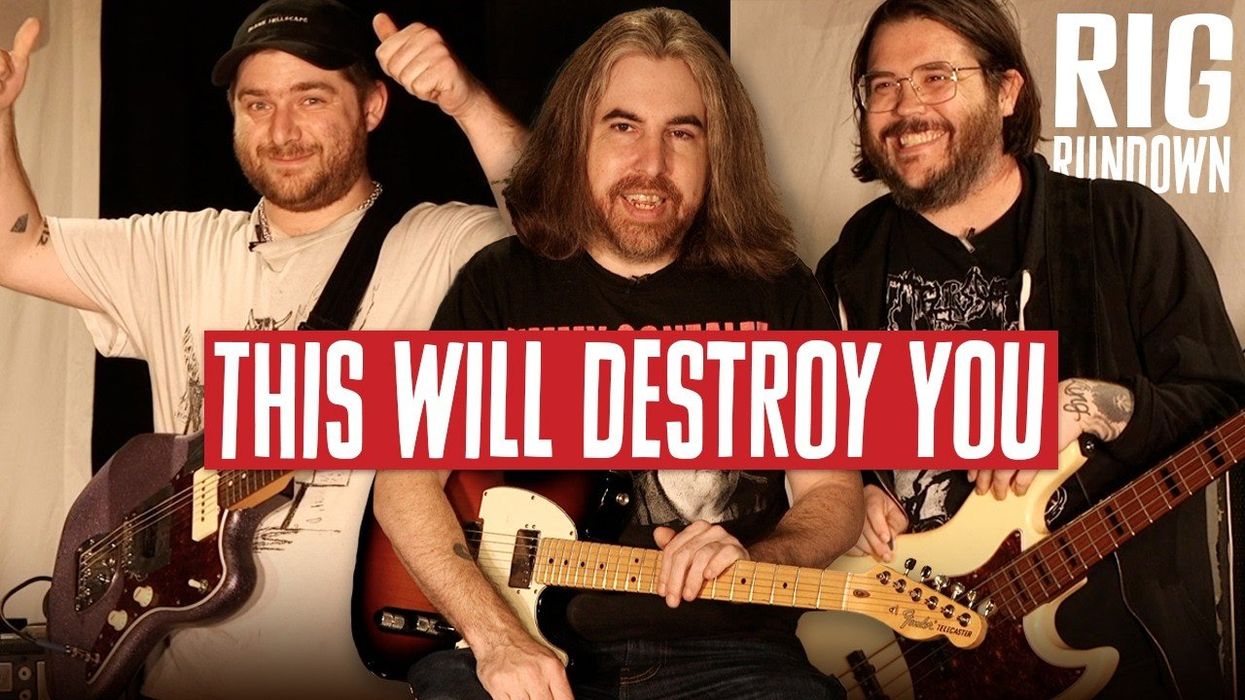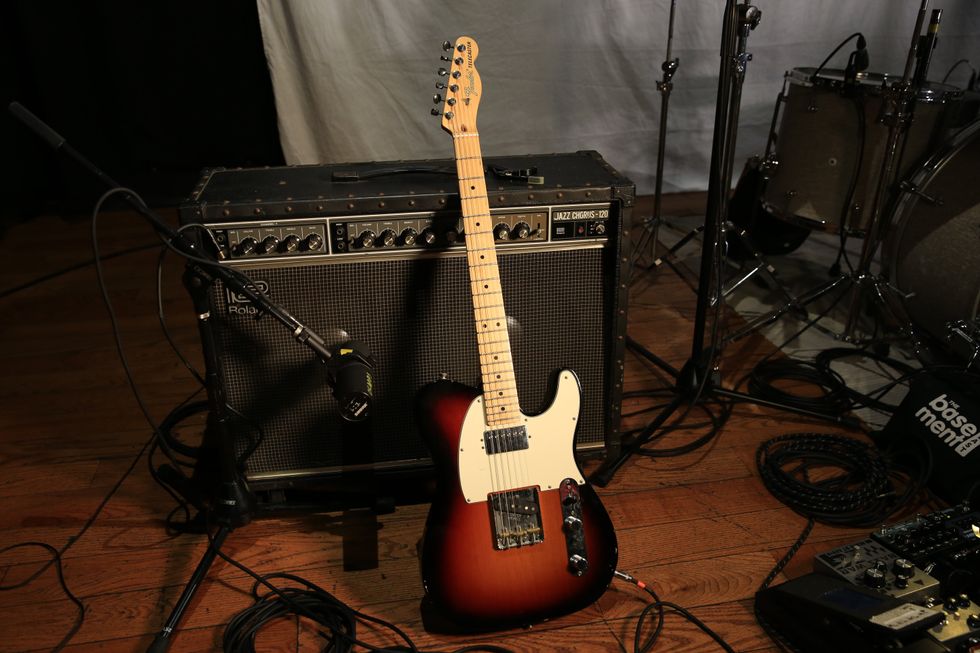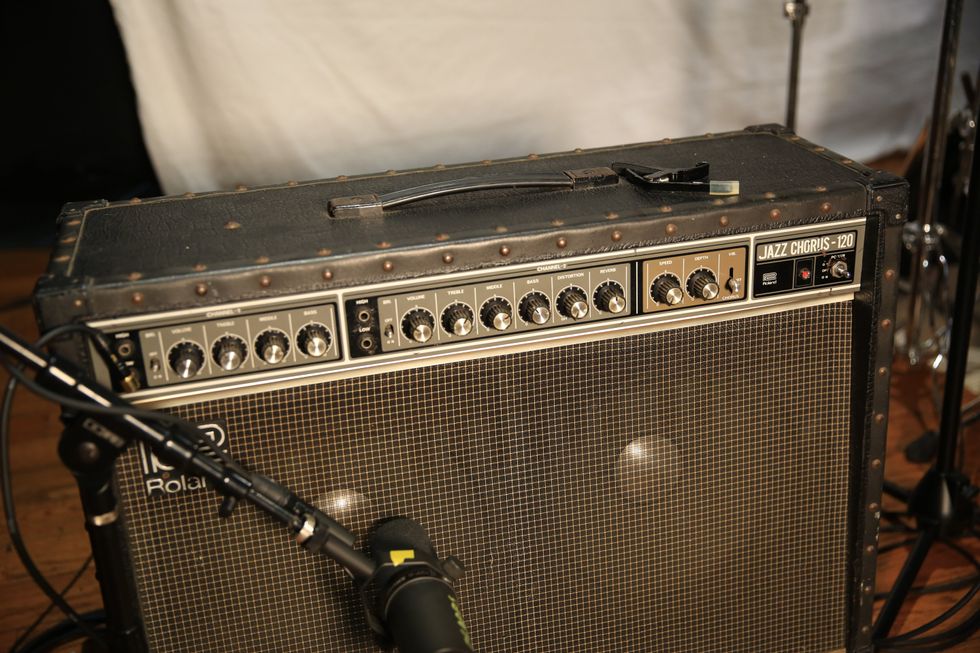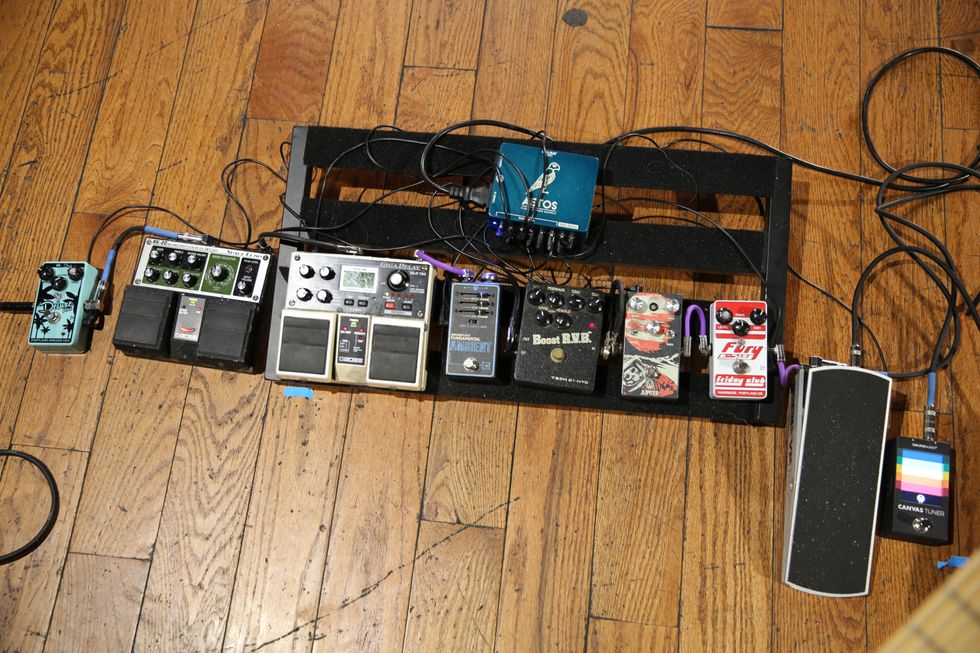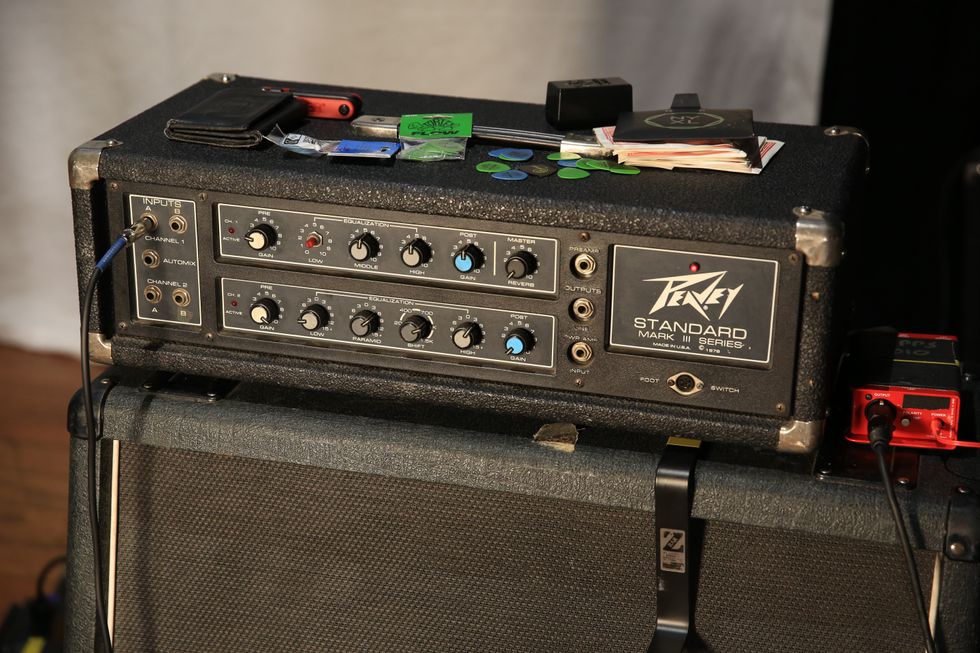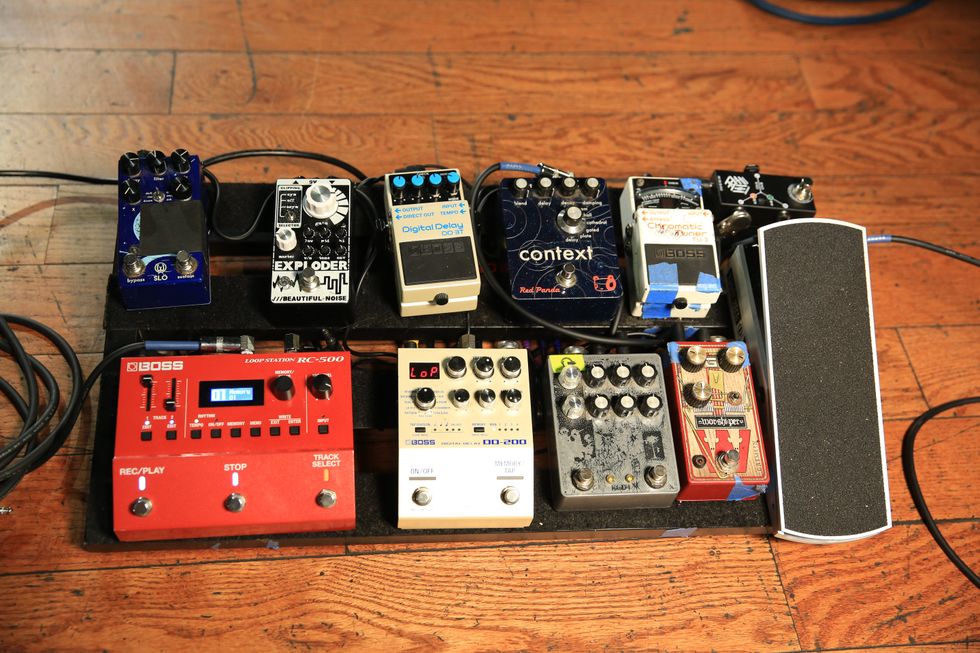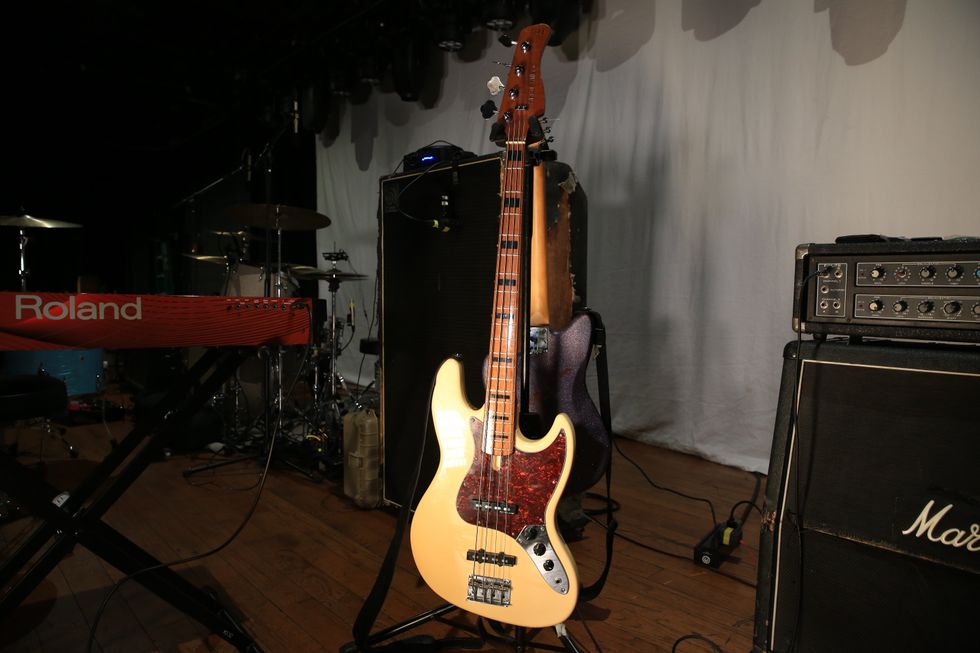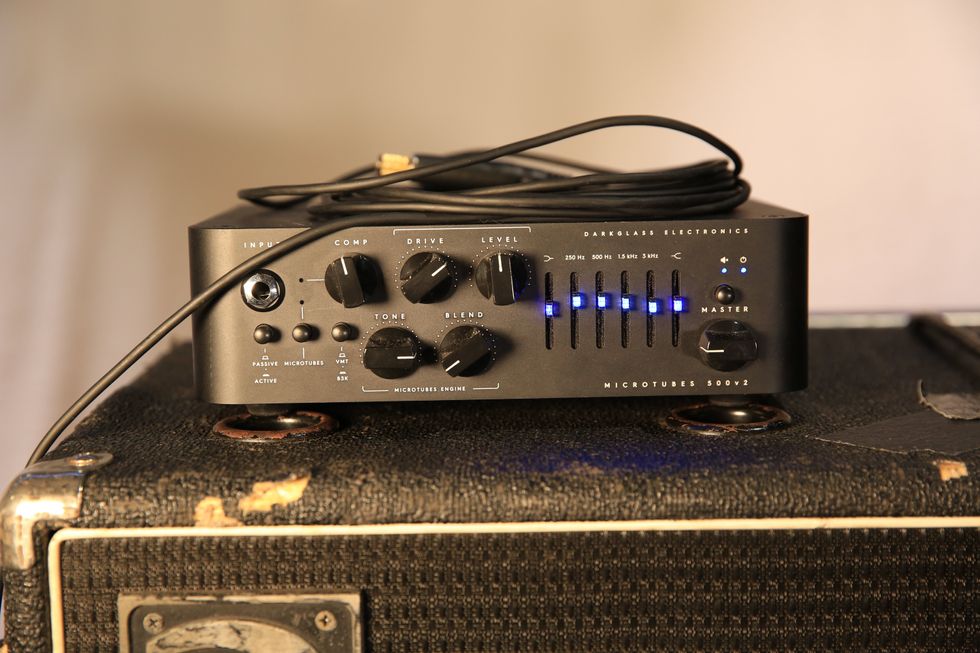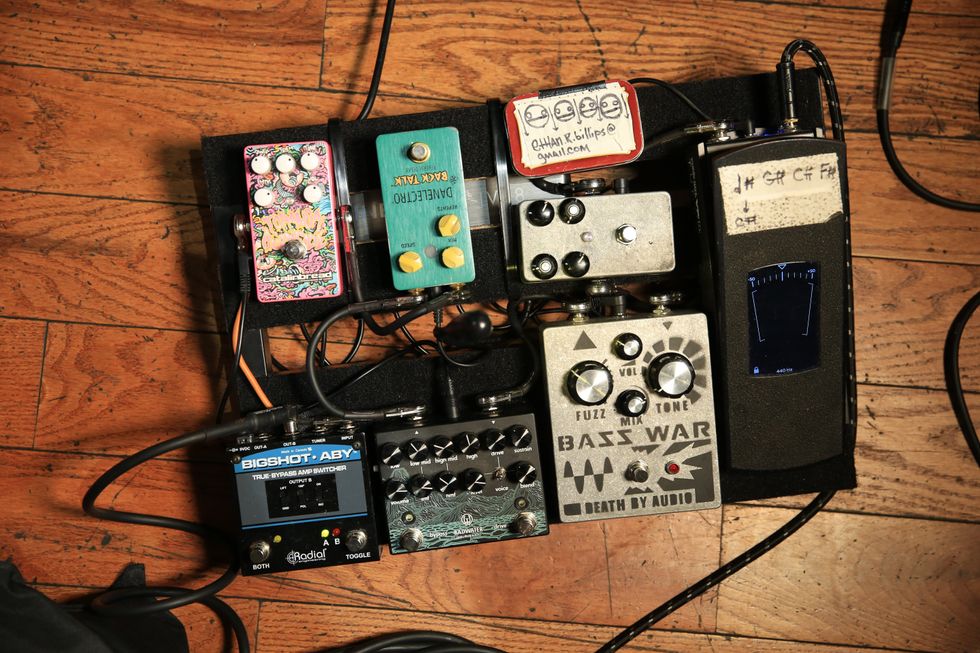RatingsPros:Will appeal to home-studio owners and guitarists switching to bass. Solid tones. Cons: Not for slap styles or aggressive play. Feels slightly overpriced. Street: $899 Eastwood Airline Pocket Bass eastwoodguitars.com | Tones: Playability: Build/Design: Value: |
You say you want a revolution? It seems sometimes that we are in the middle of one with today’s short-scale revival. Why the push? For one, short-scale basses are secret weapons in a lot of recording studios. They have a vibe all their own and can really make a track stand out with a different sound compared to their big brothers. These basses also attract guitar players to the “dark side” and can get blossoming musicians introduced to bass earlier, since smaller-scaled basses are more user-friendly for smaller hands.
Last year, Eastwood Guitars started a crowdfunding pre-order campaign to get a reissue of Valco’s Airline Pocket Bass to market. They quickly surpassed their goal and the bass was brought back from the history pages. Recently, we got our hands on one to determine if the contemporary model could do the original justice.
You’re Killin’ Me, Smalls!
The Airline Pocket Bass arrived in a custom case, and I was instantly smitten. It’s so small that it’s cute. The APB’s scale length measures 26 1/2", but we shall not judge this bass on size. The mahogany body actually has some weight to it, and Eastwood stayed true to a lot of the original design, albeit with some upgrades.
Upon first strike, it took a little time getting used to the scale—all of five seconds. The APB bass is comfortable, balanced, and feels really natural. It’s also very guitar-like, which is understandable because it’s widely believed the originals were made from leftover guitar bodies. If you are normally a 6-stringer, you’ll feel right at home on the Airline.
The design features on the Airline Pocket Bass are not only a killer nod to the past—they make this bass easier on maintenance and tonal fronts. When I first picked up the APB, there was a decent buzz due to typical climate movement and the action needed help. Instead of getting out a hex wrench, I simply adjusted the Tune-o-matic-style bridge screws and was back in business with unplugged vibey goodness.
There are a few more slick features that make the Airline stand out. The burst finish shows off a very nice wood grain and the headstock is alpine white for a dynamic contrast. The pull-bar/thumb-rest combo keeps the symmetry of the bass in order, as do the angel-wing “pickguards” and the double-contoured body. The tuners are Gotohs, which represent a vast improvement over the originals in stability and rounds out the bass with class.
Ready for Takeoff
To get electrified, I plugged the Airline Pocket Bass into an Ampeg Scrambler pedal, running headphones out, and set the pedal to clean (at least to start). The Airline has two pickups: a neck humbucker and a piezo in the bridge. The two controls are simply a blend and volume, and the piezo works as sort of a tone control to take you from thud to shimmer with a quick turn of the blend.
With the volume dimed and the balance at 50/50 between the two pickups, the Airline gave me a pointed tone with mids a bit harsh for my liking. To my ears, the bass had a metallic sort of snap and lacked some authority in this setting. It will cut through the mix in this configuration, however, and the edginess from the bass worked well with some dirt from the Scrambler.
Rolling the blend control between 75 to 100 percent humbucker, the bass becomes the tone machine that prompted G.E. Smith to say the original Airline was the best sounding studio bass ever. At 75 percent, the bass loses a little power, but becomes rich. It made up for the aforementioned lack of authority and became a bass I would happily track with. (I love that the humbucker is so close to the neck you can almost fret it.) At 100 percent ’bucker, it’s a 100 percent vintage tone that would make the Mod kids happy, as well as many a producer. I can only imagine how great the Airline would sound with flats.
Pushing the tonal range to the other end of the spectrum, the piezo pickup provides a bright yet powerful push and gives the Airline Pocket Bass a sharp contrast to the humbucker tone. Again, I can’t help but think what this bass would sound like with flatwound or tapewound strings to tame the high-end shimmer and give the bass more of a woody upright flavor. The piezo cuts through the mix with no issue, but it’s still a touch bright for my liking, even with the pao ferro fretboard curbing it a little. That said, I don’t think the Airline needs a dedicated tone control for either pickup. With a little EQ help, I could play an entire show using just the piezo.
The Verdict
The Airline Pocket Bass from Eastwood is a winner. I think the tones are solid and could find a home on more than a few records. As far as live playing, the bass will appeal to the guitarist who drew the short straw and has to (or gets to) play bass all night. School of Rock-type learning centers may take note, too, as this bass will fit well into small hands. It’s not necessarily a beginner price, but it will give younger players less frustration than a full-scale bass might provide.
Watch the Review Demo:




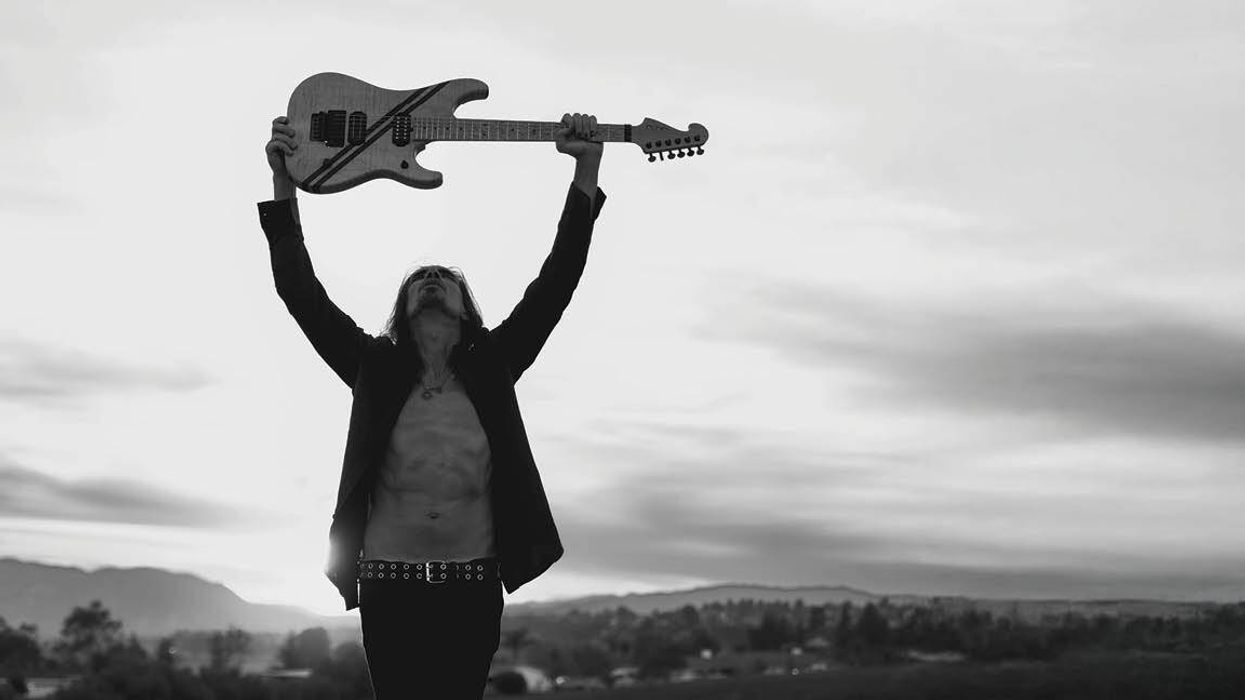
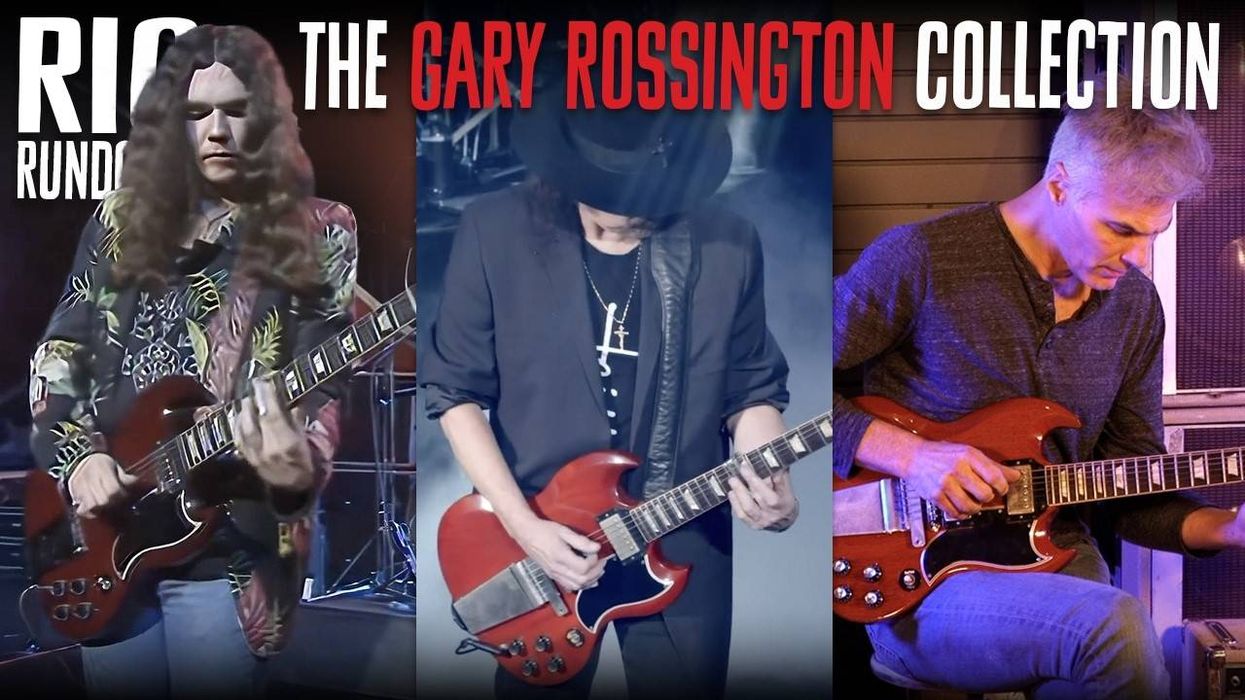


![Rig Rundown: AFI [2025]](https://www.premierguitar.com/media-library/youtube.jpg?id=62064741&width=1245&height=700&quality=70&coordinates=0%2C0%2C0%2C0)












 Shop Scott's Rig
Shop Scott's Rig

![Rig Rundown: Russian Circles’ Mike Sullivan [2025]](https://www.premierguitar.com/media-library/youtube.jpg?id=62303631&width=1245&height=700&quality=70&coordinates=0%2C0%2C0%2C0)


